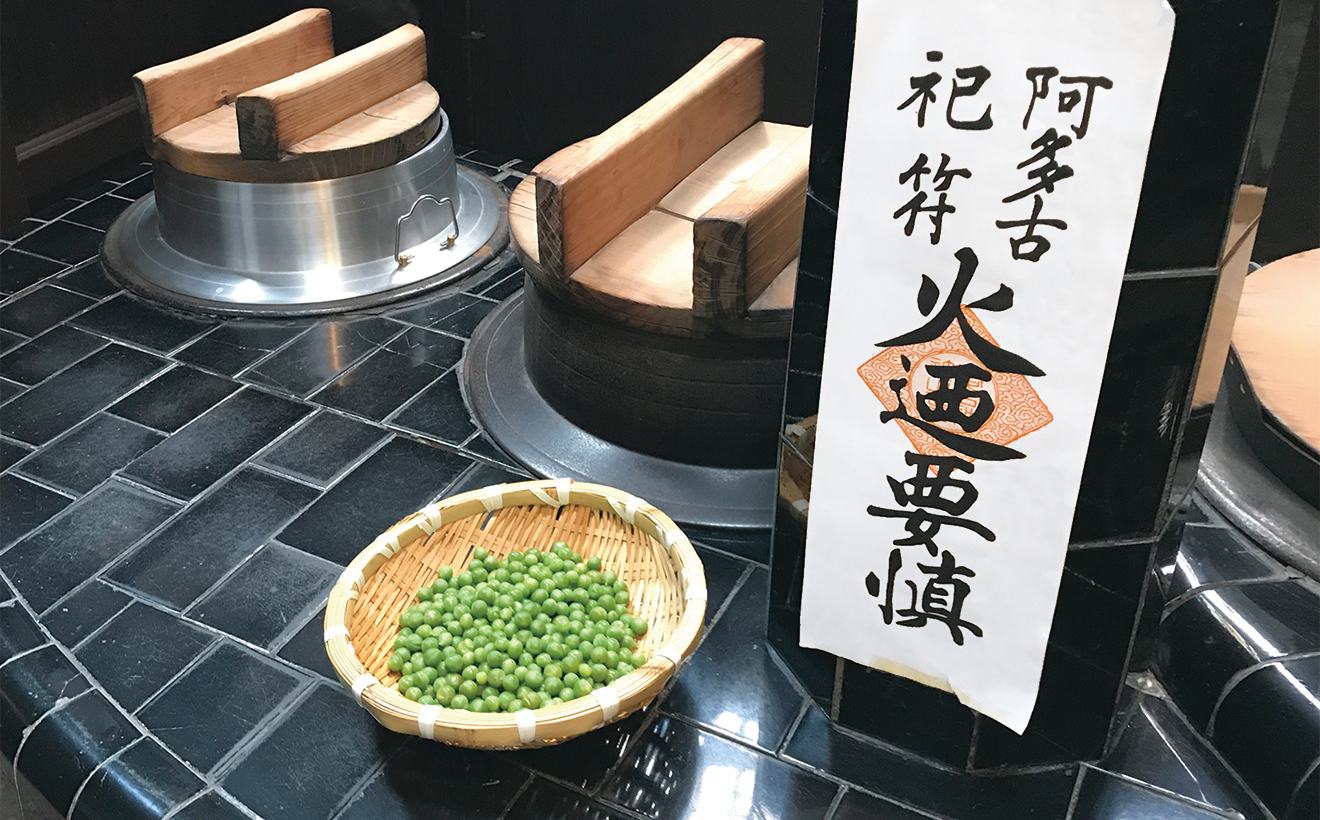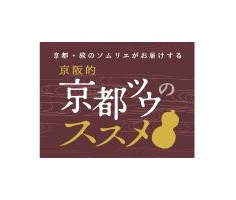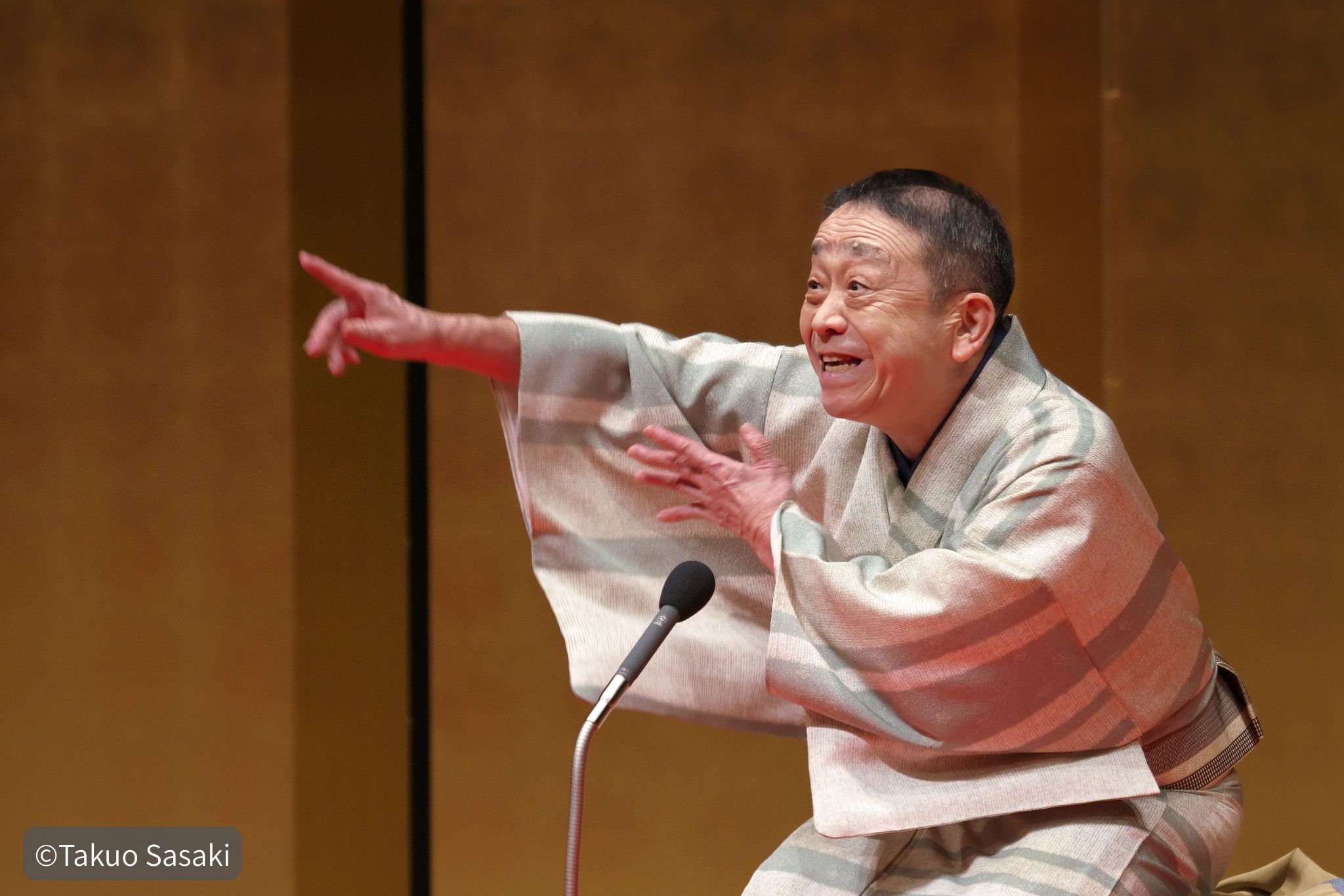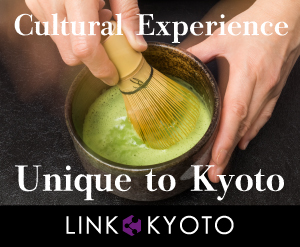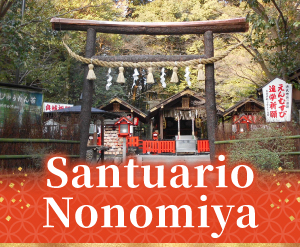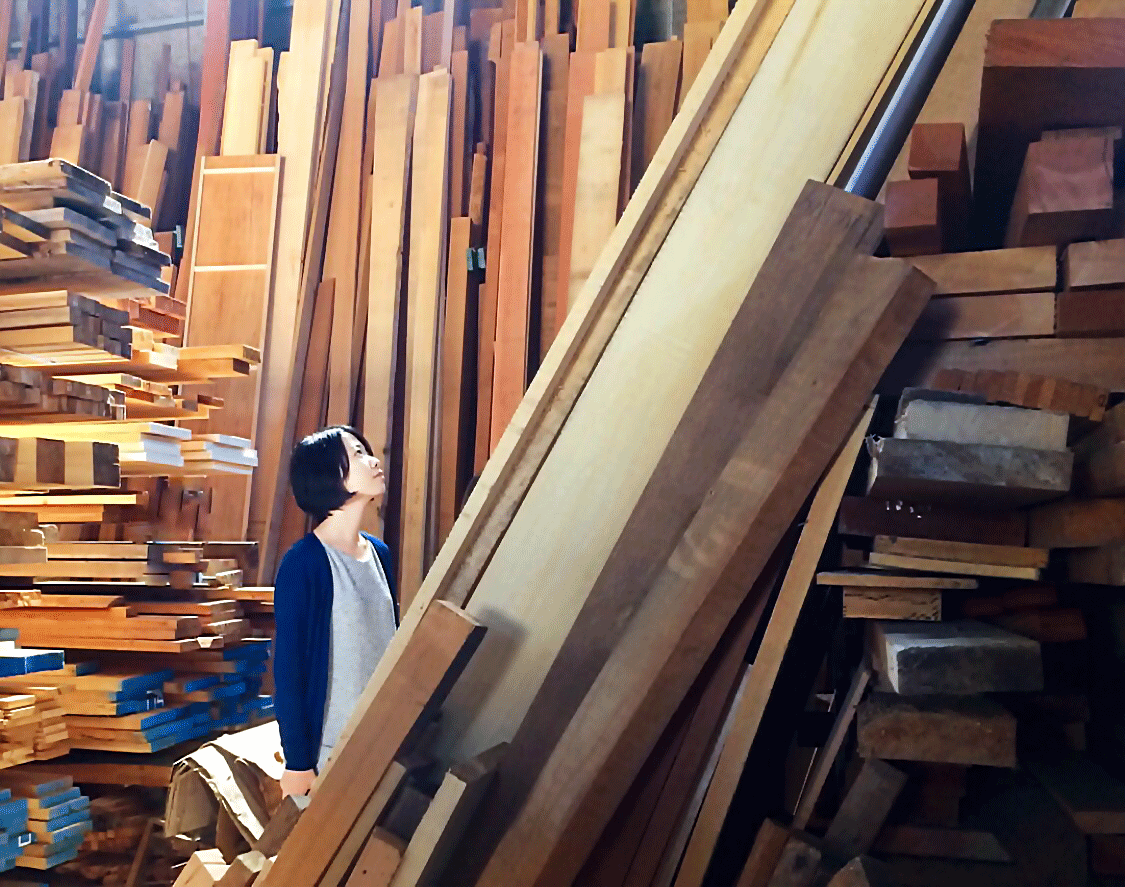
TEXTO DE: Natsumi Tabusa
Aeru Company, Gerente General de la División Oeste de Japón
Kioto es una ciudad con una rica historia y cultura. Siempre hay muchos turistas, así que, naturalmente, la gente busca lugares que pocos conocen.
“Kioto secreto”, “La nueva cara de Kioto”… estos son los títulos de las revistas que hablan de Kioto, y se puede ver que todo el mundo está buscando rincones secretos.
Soy una de esas personas que disfrutan este tipo de artículos.
Hace sólo menos de cuatro años que empecé a trabajar en Kioto y no soy un experto en presentar lugares atractivos.
Sin embargo, gracias a mi experiencia comunicándome con artesanos tradicionales japoneses, obtuve algunos consejos para ver las cosas que me rodean de manera diferente a como lo hacía antes.
¡Realmente transforma un lugar común en mi propio “lugar secreto”!
En este artículo, permítanme presentarles algunos de estos consejos.
Aprenda de un carpintero: ¿cuál es el punto destacado de la "veta de la madera"?
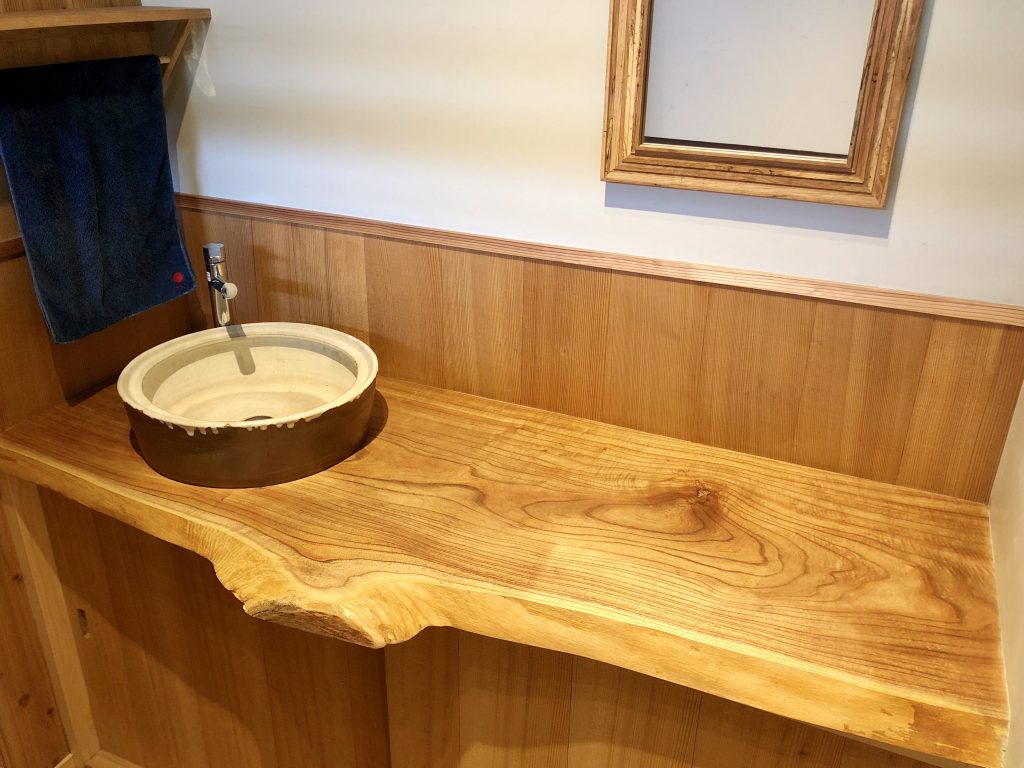
El baño de una tienda de artesanías, “aeru gojo”
¿Te gustan los espacios llenos de aroma a madera y sus interiores?
Nos hacen sentir tranquilos ¿no?
Esta foto muestra un rincón de mi lugar de trabajo, “aeru gojo”, la tienda de la marca “aeru” de productos tradicionales para bebés y niños.
Aquí está uno de mis lugares favoritos de la tienda.
El lavabo es una única tabla de madera de Chinaberry que el constructor consiguió para nosotros.
Pasó cuando recién empecé a trabajar con artesanos.
Cuando un carpintero vio este lavabo de una sola tabla, lo admiró por su “magnífico diseño”.
Éste es el “patrón” al que se refería el artesano.
Después de que me dijeron esto, me di cuenta de que nunca había “mirado” el tablero de madera.
Cuando lo miré más de cerca, pude sentir la energía como si una rama pudiera salir repentinamente de esa superficie similar a un espejismo en cualquier momento.

El carpintero me habló del patrón de la veta llamado “Moku”.
Al igual que las caras de las personas, cada pieza de madera tiene un patrón de veta único.
“Moku” se refiere a patrones de grano particularmente preciosos y hermosos.
Cada uno tiene una idea diferente de qué patrones son bellos.
Aun así, me resultó interesante que haya patrones que los artesanos que han visto mucha madera consideran “interesantes”, “inusuales” y “hermosos”.
Esta experiencia fue asombrosa para mí.
Siempre me sentí cómodo en un lugar con olor a madera e interiores sin mirar cuidadosamente la madera en sí.
Apreciando la veta de la madera como si fuera una búsqueda del tesoro
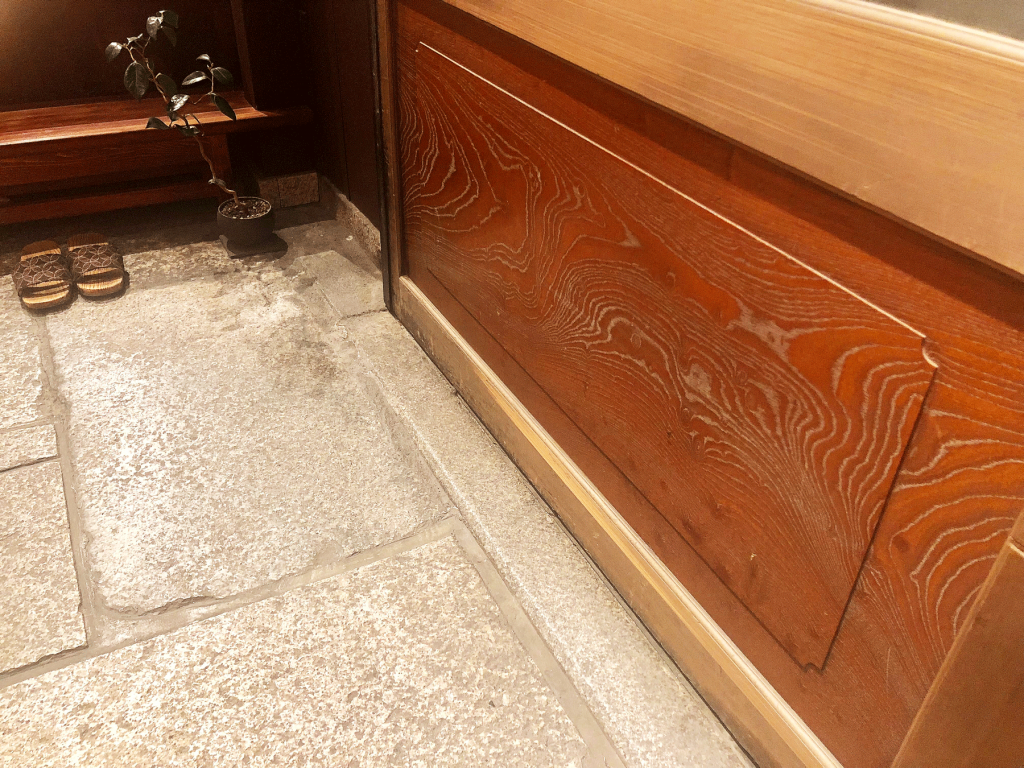
La veta de la madera en una casa tradicional de madera en Kioto
Ahora que esto había despertado mi interés en la veta de la madera, inconscientemente comencé a prestarle atención.
Incluso cuando miro los mismos objetos y paisajes antes, todos me parecen totalmente diferentes.
Tan solo aprender un poco sobre las vetas de la madera me aporta algo que enriquece mi día, como una búsqueda del tesoro.
También puedo disfrutar de lugares turísticos que ya he visitado y hacer nuevos descubrimientos.
En Kioto hay muchas casas de madera construidas con madera valiosa.
Incluso cuando miras una pared de madera, preguntándote dónde está su punto de atractivo, es posible que descubras inesperadamente algo nuevo.
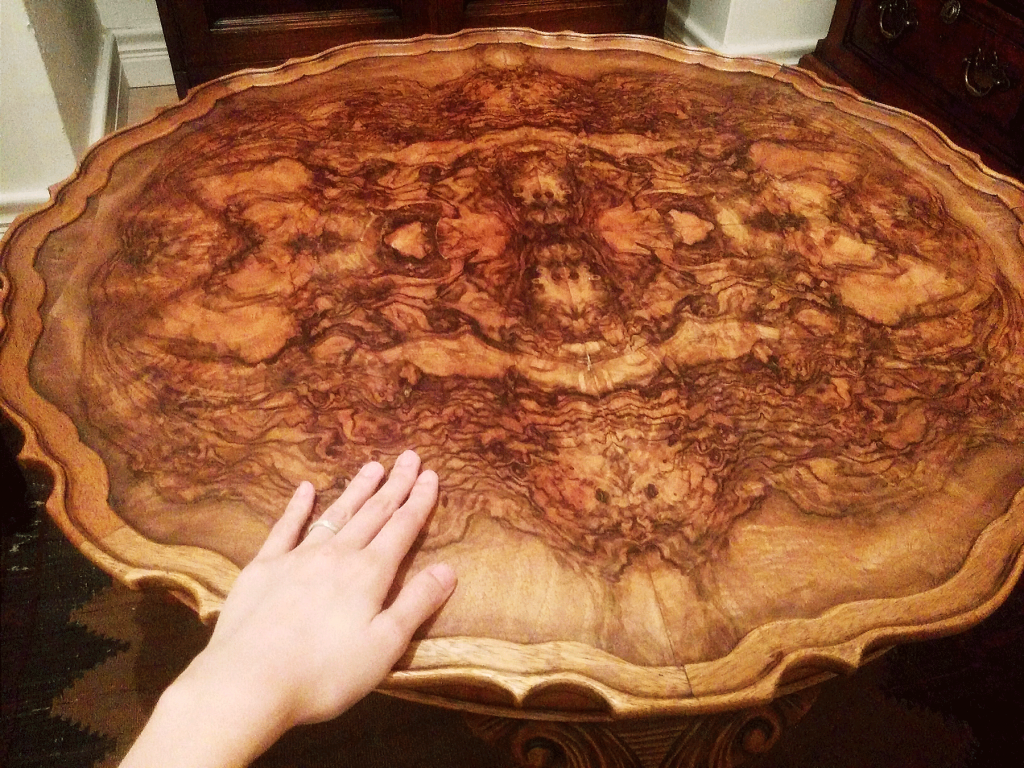
Una tabla que utiliza una parte de un nudo de árbol.
No olvides prestar atención a los muebles de madera que ves en varios lugares.
La mesa de la foto es una antigüedad importada.
El diseño ha utilizado la parte nudosa de la base de un nogal.
De hecho, este también es un tipo de “Moku” y se crea cortando el nudo de un árbol.
Parece que a los artesanos del extranjero también les encanta utilizar la veta de la madera al elaborar sus productos.
El encanto de la "veta de la madera" creada por la naturaleza
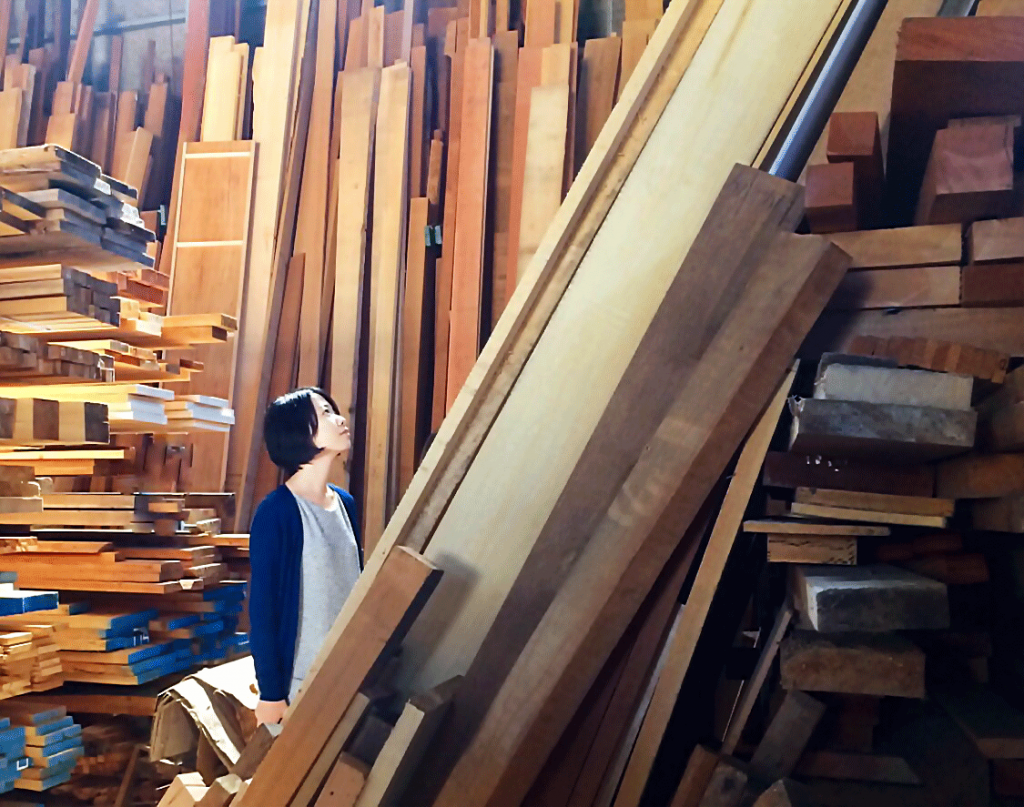
Visita a un almacén revestido de madera
También hay otros patrones fascinantes de vetas de madera.
En un aserradero de la prefectura de Toyama, se procesaban maderas con vetas inusuales.
Eran bosques con rayas negras dejadas por hongos y algunos robles con agujeros hechos por insectos.
Según el carpintero, algunas vetas de la madera se forman por actividades biológicas, como hongos e insectos.
Las huellas de sus vidas aparecen ante nosotros de forma única.
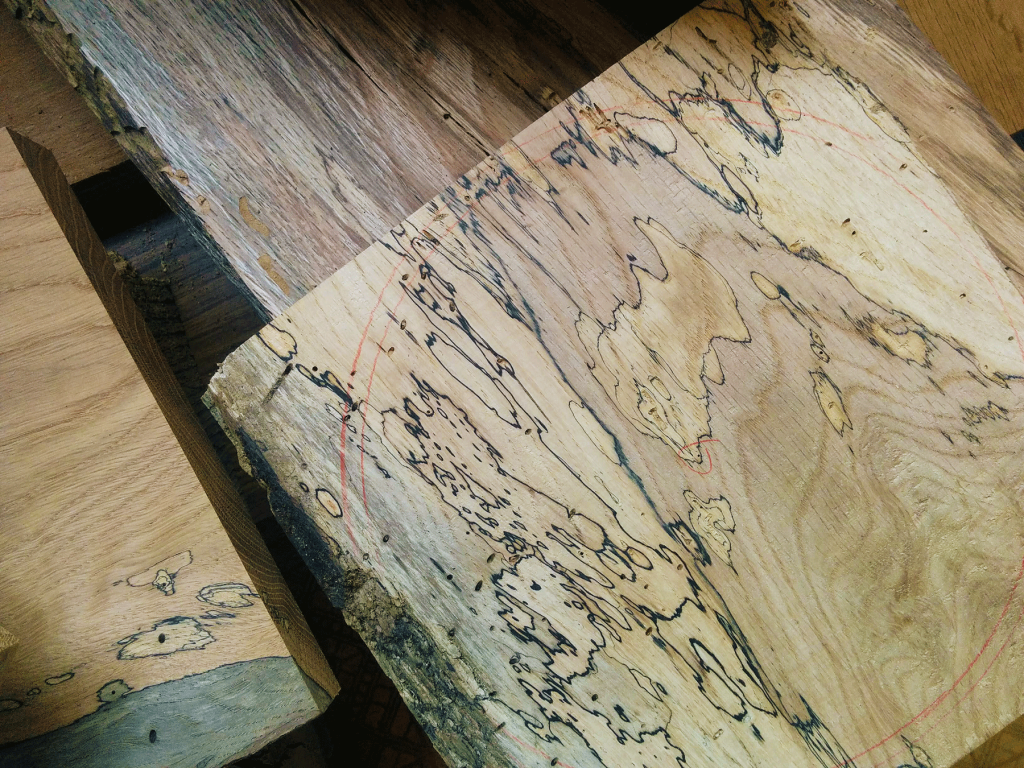
Un trozo de roble
La veta de la madera producida por el movimiento de los insectos se utiliza en suelos.
Encontré esto usado en el piso de un hotel específico.
Si no hubiera sabido de este patrón, podría haber pasado por este piso sin observar.
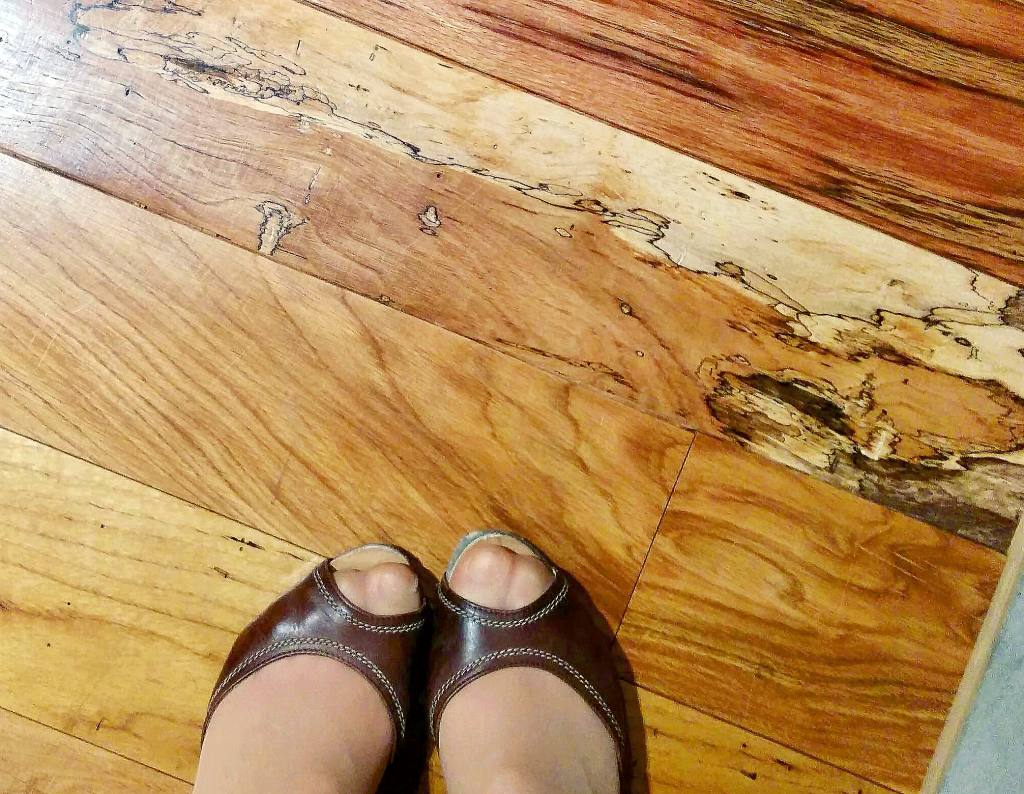
Suelo con vetas de madera creadas por el movimiento de los insectos.
Kioto tiene muchos lugares turísticos, como santuarios, templos y casas históricas con madera preciosa que ahora es difícil de conseguir.
Puede encontrar interesantes patrones de vetas de madera en las paredes de la casa, pilares, puertas, mesas, sillas y otros lugares.
Asegúrese de caminar por las calles y buscar los hermosos patrones de vetas de madera.



